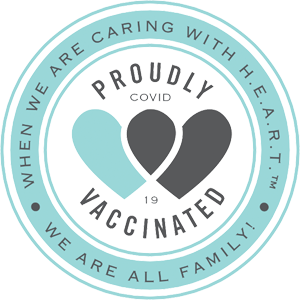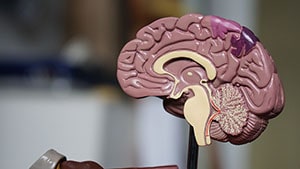November is National Alzheimer’s Awareness Month in the United States. With nearly 6 million people suffering from this disease in 2020, this month of awareness strives to make the general public more aware of the disease and shed light on potential care options and early warning signs.
There are several ways you can get involved in raising awareness and taking your own precautionary measures this year.
Alzheimer’s affects about 1 in 2 families in the United States, but most people don’t know these facts about the disease. So the first step to take this month is to educate yourself about the specifics of the disease.
- It’s a form of dementia. Alzheimer’s is the most common form of dementia, which is just a general term for memory and cognitive ability loss that is severe enough to interfere with daily life. Alzheimer’s accounts for up to 80% of all dementia cases.
- It’s not part of the normal aging process. While the majority of people with Alzheimer’s are 65 and older, it’s not exclusive to only the aging populations. There are approximately 200,000 Americans under age 65 with early-onset Alzheimer’s.
- It gets progressively worse. Alzheimer’s has been known to have worsening dementia symptoms as time goes on. In the early stages, memory loss is mild and might be as simple as forgetting where you put your car keys. However, in the late stages, you can lose the ability to even carry on a conversation.
- It has varying survival rates. Alzheimer’s sufferers live an average of 8 years after their symptoms become noticeable to loved ones, but it can range to as many as 20 years depending on age and other health conditions.
- It has no cure and limited treatment options. For the number of people that suffer from the disease, the research is still limited and no cure currently exists. Treatment plans are generally designed to treat the symptoms as research continues. There are hoards of professionals around the world conducting research and searching for better ways to treat the disease, preventive measures, and more.
The Current State Of The Epidemic
The current state of the Alzheimer’s epidemic in the U.S. is highlighted by the Alzheimer’s Association’s annual report.
- Every 65 seconds, someone in the U.S. develops Alzheimer’s disease
- 5.8 million Americans are currently living with Alzheimer’s disease
- By 2050, an estimated 14 million Americans will have Alzheimer’s
- Alzheimer’s disease is the 6th leading cause of death in the United States
- 1 in 3 seniors dies with Alzheimer’s or another dementia
- Between 2000 and 2018, deaths from heart disease have decreased 7.8% while deaths from Alzheimer’s have increased by 146%
- More than 16 million unpaid caregivers provided 18.6 billion hours of care, valued at nearly $244 billion
- The estimated lifetime cost of care for someone living with dementia is $341,840
- In 2020, Alzheimer’s and other dementias will cost the country $305 billion. By 2050, these costs could rise as high as $1.1 trillion
- Early diagnosis of Alzheimer’s could potentially save our country $7.9 trillion
- In 2019, The Alzheimer’s Association granted more than $42 million to 162 new scientific investigations aimed at a vision of a world without Alzheimer’s.
How You Can Get Involved
The goal of National Alzheimer’s month is not only to raise awareness about this terrible disease but also to get more people involved year-round. There are many ways you can make a difference.
- Help a caregiver. The Alzheimer’s Association has a part of their website set up where you can leave a tribute for the caregivers who are giving their time to help those suffering from Alzheimer’s, especially those who are doing it without pay for their loved ones.
- Participate in a walk. There are over 600 communities across the country that host a “Walk to End Alzheimer’s.” Find one close to you using the ALZ walk locator.
- Wear purple. It’s the official color of Alzheimer’s awareness. Wearing it and encouraging others to do the same is a great conversation starter than can help raise awareness in your community. Use the hashtag #ENDALZ on social media to further the cause.
- Donate! If you can do it, this is the best way to help the cause. Donations made to the Alzheimer’s Association go directly to funding research to help us understand more about Alzheimer’s and, hopefully, eventually find a cure for the disease.



